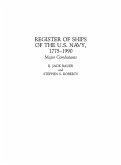This is the first book-length study of U.S. naval operations in the Mediterranean from 1945 to 1947, a period that is crucial for understanding the Cold War and its origins. Edward J. Sheehy shows how America assumed the traditionally British role of providing Western naval strength in the area, detailing how an American squadron grew from skeleton size in 1945 into a powerful armada by the end of 1947. His analysis of the cautious, but effective, use of naval power to counter the Soviet Union is intended for students of military and diplomatic history. Using extensive records of the U.S. Departments of Navy and State, Dr. Sheehy examines decisions to assign naval vessels to the Mediterranean, governmental communications, the rationale for the naval presence in the area, and the working relationships between diplomatic and naval officials. The history begins with a brief summary of Western naval activity in the Mediterranean including the final months of World War II. The region witnessed a continual increase in activity from a cruiser's visit to Greece in late 1945 to developments toward a Sixth Fleet at the end of 1947. The naval build-up is thoroughly chronicled with accounts of the battleship Missouri's journey to the area, numerous destroyer and carrier cruises, Secretary of the Navy James Forrestal's September 1946 announcement affirming America's permanent presence in the Mediterranean, and President Harry S. Truman's August 1947 directive regarding visits to Greece.
Hinweis: Dieser Artikel kann nur an eine deutsche Lieferadresse ausgeliefert werden.
Hinweis: Dieser Artikel kann nur an eine deutsche Lieferadresse ausgeliefert werden.








